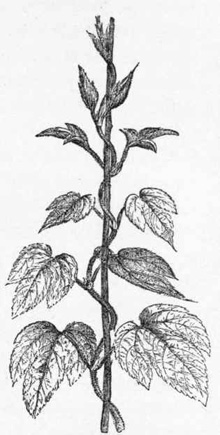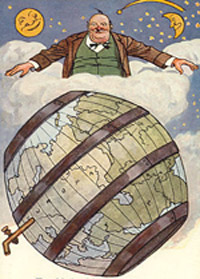You can go through the motions with your magic spells
Buy all the potions that Fifth Avenue sells
You can try to call down all the stars above,
but –
Don Henley concludes “you can’t make love.” Were this YouTube you might listen to me instead sing, “you can’t make me buy your beer.” That would surely cure you of YouTube.
 I bring this up because host Alan McLeod politely asks that for the 50th gathering of The Session we write about “How Do They Make Me Buy The Beer?”
I bring this up because host Alan McLeod politely asks that for the 50th gathering of The Session we write about “How Do They Make Me Buy The Beer?”
They don’t.
In all fairness to Alan, I’m probably overthinking this. And the question put to us — well, the first of several — beyond the headline is “what makes you buy someone’s beer?” In fact, it seems today’s sessioners have chosen to reveal what it is that causes them to make their own choice. Not how a beer company makes, or compels, any of us to buy their beer.
Yep, he’s overthinking this. Time to go read what The Beer Nut has to say.
I might be a bit naive, but I’m also old. I understand the advertising-marketing-business-consumer matrix. The only market in our village puts signs on the cooler door to let me know Marble IPA and Alien Amber Ale are “New Mexico’s Own.” The liquor store down the road advises which beers get 99 from Rate Beer users. Selected six-packs of Full Sail are on sale for $4.99 at the grocery store where we stopped to by grapes (on sale) yesterday.
I’ve got a lot of choices. A lot more than just a few years ago. A lot, lot more than 30 years ago. A lot more than in St. Paul, Minnesota, in 1885. For that, a bit from Doug Hoverson’s wonderful “Land of Amber Waters,” in which he writes about “imported brands.”
Most towns had at least one establishment offering “fresh Milwaukee Beer always on tap.” Prestige was also a way to neutralize the increased cost of providing imported beer. It was made up elsewhere, but in the case of a large beer garden where beer was the only product, the cost could make or break the enterprise. Planners of the temporary saloons at the Minnesota State Fair in 1885 estimated that “if Milwaukee beer is used, this will cost $8 — a trifle over a cent a glass, or $576 for the 54,000 glasses. If, however, the purchases of the privilege decides that he must figure close, St. Paul beer can be purchase at $6.50 per barrel, or thireen-fifteenths of a center per glass.” Serving only Minnesota beer at the State Fair to promote the state agricultural products does not seem to have been an important consideration for planners.
I got to thinking about history because of the knee jerk reaction at midweek to totally unsubstantiated claims from Anthony Bourdain (so silly that rather than providing more Google juice for a rumor that search engines will forever turn into fact I’ll give you this one instead). Something bad? Blame it on Big Beer. They’ve got the bucks and the power to make¹ sure all those dufuses who drink Bud and Miller Genuine Draft and something called Silver Bullet remain under their spell.
Go read “Ambitious Brew.” Beer drinkers were complicate. Something to remember when celebrating the diversity of what’s available now. It disappeared before. And not because of the super powers of Big Beer².
OK, I’m done, but I feel obligated to answer Alan was really asking. What’s the best way to persuade me to buy a particular beer?
Don’t tell me. Show me. (I would have typed that even if I weren’t moving to Missouri.)
*****
¹ For the record, I don’t think that’s what Alan was implying when he wrote the headline announcing this month’s topic.
² I’m kind of digging this phrase Big Beer. Hope somebody makes it part of a Session theme.
Not beer related, but as I was tracking down the lyrics to Don Henley’s song the thought occurred to me . . . Moscow girls do actually make me sing and shout. No YouTube video. I promise.
 I don’t have an answer, but I like the sound of names such as The Grape Hop and Canterbury Jacks.
I don’t have an answer, but I like the sound of names such as The Grape Hop and Canterbury Jacks.  The Big Four of Big Beer worldwide — Anheuser-Busch InBev, SABMiller, Carlsberg and Heineken — sell 50 percent of the beer. As recently as the 1990s they had only a 20 share.
The Big Four of Big Beer worldwide — Anheuser-Busch InBev, SABMiller, Carlsberg and Heineken — sell 50 percent of the beer. As recently as the 1990s they had only a 20 share. Alan McLeod has posted his
Alan McLeod has posted his